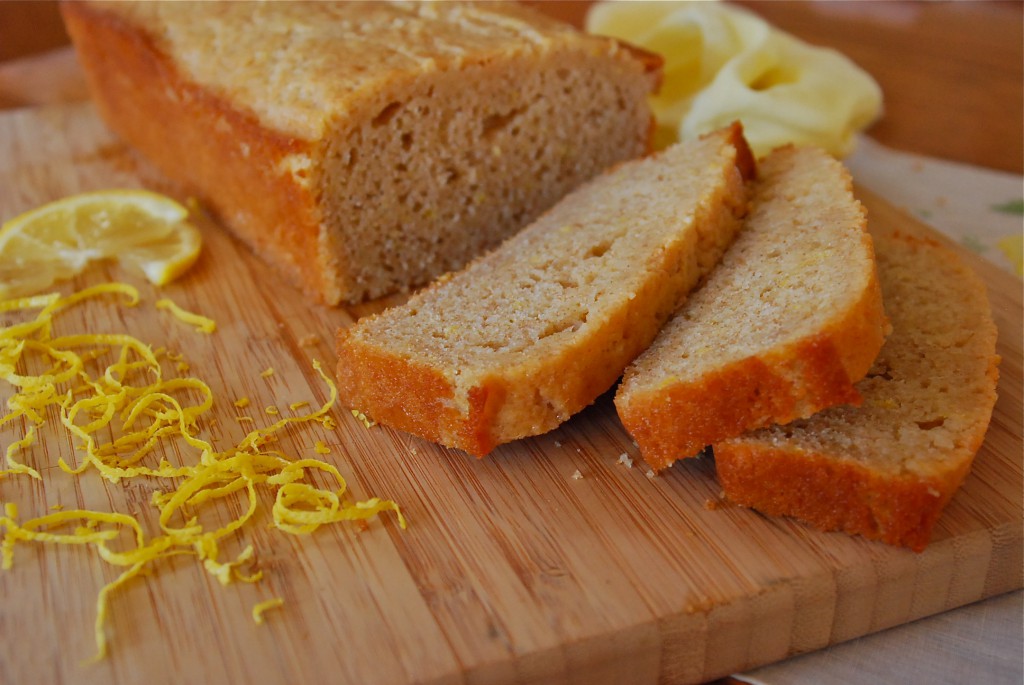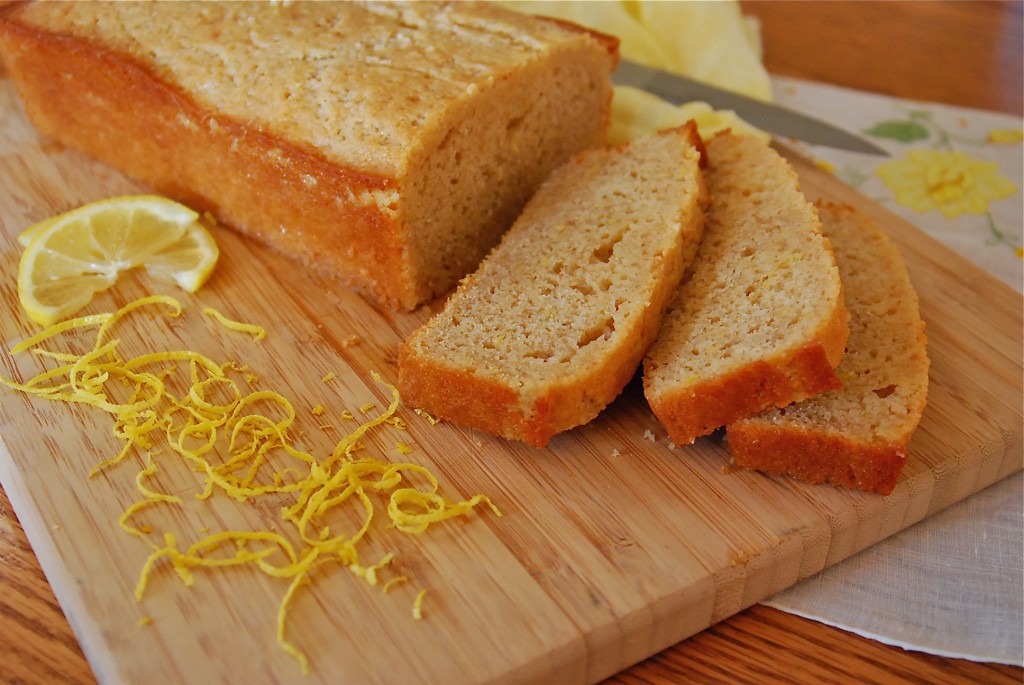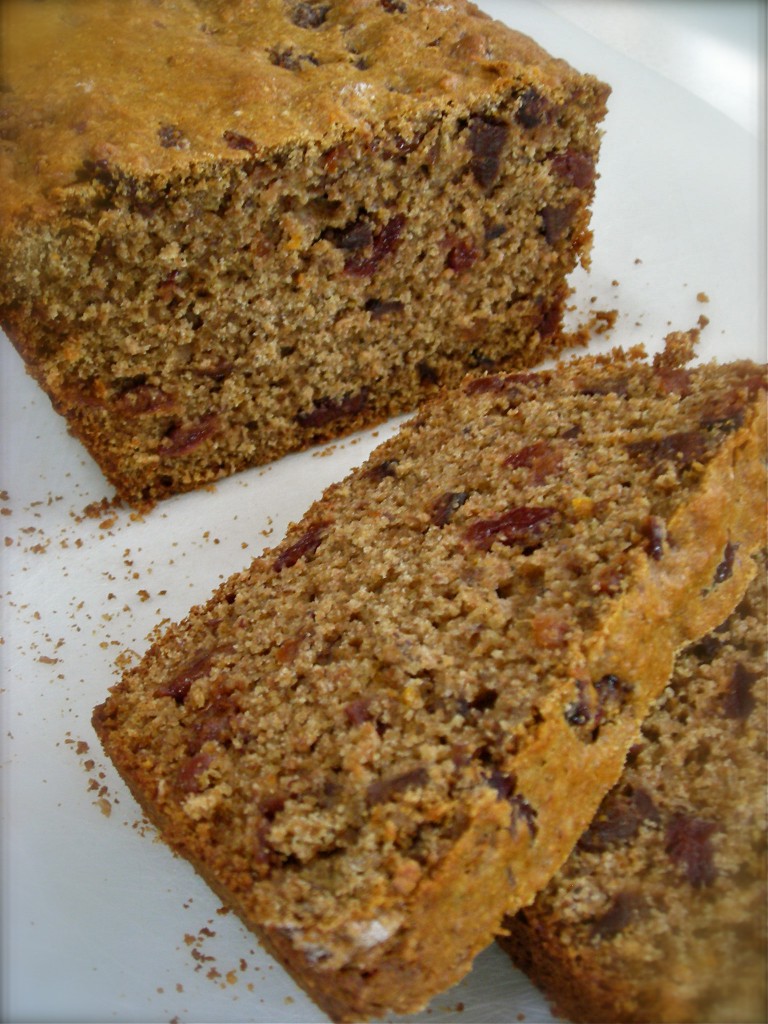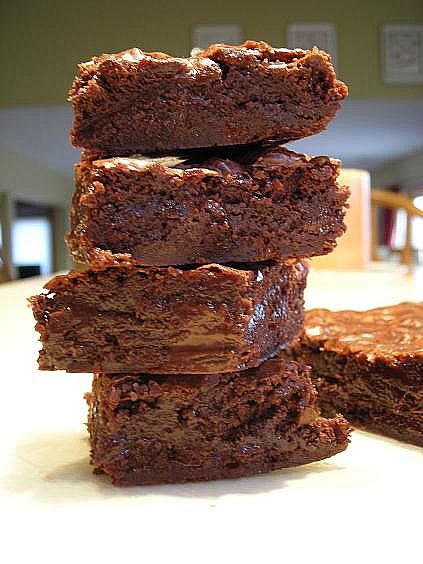January 27th, 2012
| 4 Comments »
January is drawing to a close and we’ve only just now received the first good snowfall to completely cover the landscape. And with only one brief cold snap, where temperatures dropped below zero for a day or two, it really just hasn’t felt much like winter at all. Still, the calendar doesn’t lie, the light still falls off before the dinner hour -although it gets later and later every day!!- and the hum of an oven, concealing something aromatic and delicious is still welcomed in any Minnesota home.
Lemon is everywhere right now. Those bright yellow orbs are certainly popular in the wintertime, bursting forth with that incredible fresh scent. Lemon is like sunshine, and not just from the sunny yellow color; that spritz of luscious lemony aroma that bursts from the rind when you cut into it is a wonderful tonic to the drab and gray of a winter day. I even feel sunnier eating lemon, like the light rays are just pouring through me. And citrus fruits are coming to the cold, lifeless mid-section of the country in all forms; gigantic globes of grapefruit, sunny tangerines, adorable little kumquats and key limes plus endless lemons.
I love to bake with lemon anything, and I particularly love the fresh zest paired with blueberries. But I have to admit that a lemon pound cake can make my knees weak. There is something about that tart bite, and the dense moist crumb that gets me, that makes it irresistible. But I’m not such a huge fan of the calories in pound cake, so finding a recipe that makes a lighter and less caloric version made me eager to try it out. But I had to ask myself…. would this even be worth it? We’ve all had those experiences of finding a less decadent way of baking a prized cake that simply falls flat. I couldn’t stand to be faced with a lemon cake that left me wanting more.
Needless to say, I was not at all disappointed.

If you didn’t know that this cake wasn’t made with a ton of butter and sugar, you might not realize it at all. It still has that gloriously dense texture that’s rich and satisfying. It still shouts “LEMON!!” with every bite. It satisfies and satiates and makes for a luxurious treat that doesn’t leave you feeling too guilty. There’s a ‘just tart enough’ glaze brushed over the top of it to add even more of that lovely mouth-puckering taste, making the top of the cake nice and soft too, something I love about a good teacake.
The bright and sunny winter day even made the photos look like they were bathed in lemony light.

Lemon Pound Cake
- 1 cup whole-wheat pastry flour or white whole-wheat flour
- 3/4 cup all-purpose flour
- 2 teaspoons baking powder
- 1/4 teaspoon salt
- 3 large lemons, divided
- 1 1/4 cups sugar, divided
- 3 ounces reduced-fat cream cheese (Neufchâtel), at room temperature
- 2 tablespoons butter, at room temperature
- 3 large egg whites, at room temperature (see Tips)
- 1 large egg, at room temperature
- 1/2 cup reduced-fat milk
Preheat oven to 350°F. Coat a 9-by-5-inch (or similar-size) loaf pan with cooking spray; dust with flour and tap out any excess.Sift whole-wheat flour, all-purpose flour, baking powder and salt together into a medium bowl.
Finely grate 2 tablespoons zest from 2 of the lemons; set the lemons aside. Beat 3/4 cup sugar, cream cheese, butter and the zest in a large bowl with an electric mixer on medium-high speed until light and fluffy, about 2 minutes. Beat in egg whites, one at a time, beating well after each addition. Add the egg and beat well. Reduce speed to medium and beat in milk; the mixture will look curdled.
Reduce the mixer speed to low and add the flour mixture in 2 batches, beating just until combined and scraping down the sides of the bowl as necessary. Transfer the batter to the prepared pan and smooth the top with a rubber spatula.
Bake the cake until a wooden skewer inserted in the center comes out clean, 45 to 50 minutes. Cool in the pan on a wire rack for 15 minutes. Run a knife around the sides and turn the cake out onto the rack.
While the cake is cooling, squeeze 5 tablespoons juice from the zested lemons. Trim the ends off the remaining whole lemon and very thinly slice; discard any seeds. Heat the lemon juice and remaining 1/2 cup sugar in a small nonstick skillet over medium heat, stirring until the sugar is dissolved. Add the lemon slices and cook, stirring frequently, until softened, about 5 minutes. Reduce heat to maintain a simmer. Use a fork to transfer the lemon slices to a bowl. Continue simmering the syrup until slightly thickened and beginning to turn golden yellow, 2 to 4 minutes
Set the rack over a rimmed baking sheet. Poke holes all over the top of the warm cake with a wooden skewer, 1 1/2 to 2 inches deep. Spoon the glaze over the cake, poking more holes if the glaze does not sink in. Arrange the lemon slices on top. Let the cake cool completely before slicing.
Recipe Notes: I made my cake with the glaze, and not the candied lemon slices. I tried, but they fell apart in the syrup and looked strange so I didn’t put them on the cake. The glaze was good, but I think the cake doesn’t really need it either.
Recipe from Eating Well magazine, posted in original form.
March 6th, 2011
| 2 Comments »
Sometimes I come across a recipe by accident, through a bevy of channels found by clicking here, clicking there, following some promising links and then WHAM! you spot something that looks so delicious that you know you have to make it, right there and right now.

Of course, it helps when I have everything on hand to make it, with the bonus of it being a much healthier version of tea bread, which, let’s face it, is just a big oblong cake, isn’t it? Most tea bread recipes could easily be baked in a bundt pan, or as rounds, covered with frosting of any sort and masqueraded as a cake. No one would really know the difference.
But this tea bread, with it’s luscious compote of cooked sweet dried cherries and figs comes out as something else. It’s dense and moist, yes, but it’s much more bread-like than your typical rectangular 9×5 offering. And I’m kind of a sucker for anything with figs in it. Back to my childhood, when a Fig Newton, fresh and cakey filled with thick pureed figs was my most favorite store-bought cookie, to the now of my adult life, and the soft magical collapse of a fresh fig in my mouth, or the sweet bite of a dried one in my morning oatmeal, there really isn’t a time that I’ll pass up noshing on figs. The glorious fig has no fat whatsoever, no saturated fat, and no cholesterol or sodium. They’re loaded with calcium too, a half cup worth of dried figs fills your entire daily requirement for calcium intake. They’re a complex carbohydrate, rich in fiber and loaded with essential minerals like potassium and iron. Excellence all around.

The recipe comes, not surprisingly, from Eating Well magazine, a publication that consistently offers up health, nutrition and simple good taste. You don’t need much in the way of fancy ingredients or advanced cooking skills to make the majority of offerings in the magazines, and along with consistently good recipes, they offer plenty of up to date nutritional information and honest discourse about food trends.
And recipes with figs. Enough said.
Cherry Fig Tea Loaf
1 c. dried tart cherries
1 c. chopped dried figs
1 c. orange juice
2 c. whole wheat flour
1/2 c. honey
1/4 c. wheat bran
2 t. freshly grated orange zest
2 t. baking powder
1 t. baking soda
1/2 t. salt
2 large eggs
2/3 c. plain soy milk
3 T canola oil
1 t. pure vanilla extract
Preheat oven to 350°F. Coat a 9 1/2-by-5 1/2-inch loaf pan with cooking spray.
Combine cherries, figs and orange juice in a medium saucepan. Bring to a simmer over low heat. Simmer, covered, for 5 minutes. Strain, reserving 1/3 cup of the fruit-cooking liquid. Set the fruit and liquid aside in separate bowls.
Stir together flour, sugar, wheat bran, orange zest, baking powder, baking soda and salt in a large bowl. Whisk together eggs, buttermilk, oil, vanilla and the reserved 1/3 cup fruit-cooking liquid in another large bowl. Add to the flour mixture and stir with a rubber spatula until just combined. Fold in the reserved fruit. Turn the batter into the prepared pan.
Bake until the top is golden and a cake tester inserted in the center of the loaf comes out clean, 35 to 45 minutes. Let cool in the pan on a rack for 10 minutes. Loosen edges and invert the loaf onto a rack to cool. Serve warm or at room temperature.
This version was adapted slightly from the original one published by Eating Well magazine. To view that, please go here.
March 21st, 2009
| 10 Comments »
 Tell me if you think those look like they are low in fat. Tell me if you think those look like they are low in fat.
Uh huh, yeah…… a low fat brownie. Oh, and do they look like they might taste pretty good? Rich and fudgey like a true brownie should? Gooey in the center with a nice firm edge that’s chewy, but soft too?? A low-fat brownie that may never pass as one if you didn’t give it away?
Well that was the goal, for certain; I was just convinced -utterly convinced -that it would never happen. I mean- a Brownie! Low fat?!- doesn’t seem possible, especially one that tastes like a fudge filled chunk of chocolate dynamite in your mouth, a small chunk so totally satisfying, but surprisingly light and full of all that good earthy brownie flavor that you crave, that sends you into chocolate nirvana. Can it be achieved without 2 sticks of butter, 2 cups of sugar and 4 eggs?
Apparently, it can. But I was mighty skeptical.
There are few baked goods that scream pure decadence like a really good chocolate brownie, yet all that richness comes at a pretty high cost calorie wise, and in fat. While they’re nice once in a while, to have them around when you’re trying hard to look good for the very-quickly-approaching time of year when the layers are shed and the body is finally exposed again, they wouldn’t be on the top of the list to indulge in. So what do you do when a Brownie Craving hits you like a freight train? Well….
Come in to my kitchen…
|




 Tell me if you think those look like they are low in fat.
Tell me if you think those look like they are low in fat.